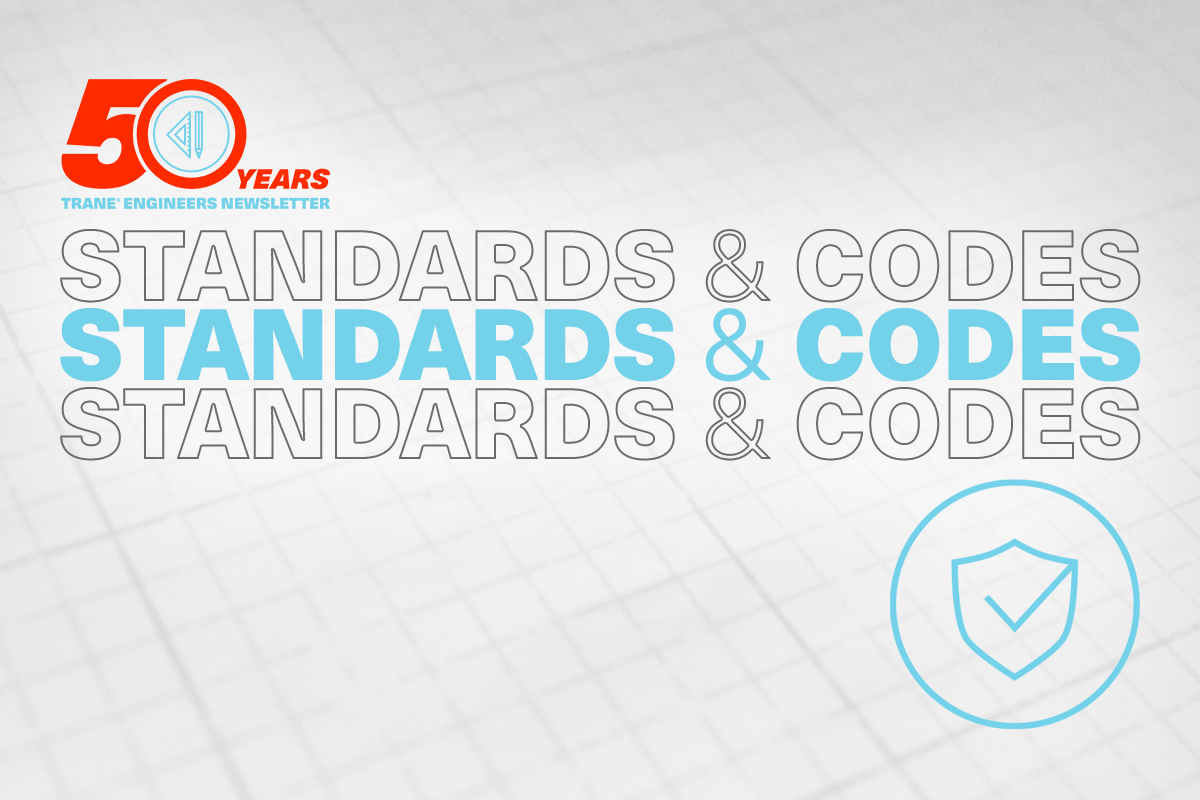
As mentioned in our January blog post, 2022 marks the 50-year anniversary of Trane’s Engineers Newsletter publication! This month we hear from a frequent EN author, Trane applications engineer John Murphy.
I’ve been an applications engineer at Trane for over 26 years. During that time, I’ve authored twenty Engineers Newsletters, several of which were related to a specific ASHRAE® or AHRI© standard. These standards impact engineering professionals who design HVAC systems, but they can be long, complicated documents. And since they are written in code-enforceable language, some of the requirements can be confusing. Through the EN, we attempt to highlight and clearly explain how recent changes to an industry standard will impact the job of the HVAC design engineer and how the design of HVAC systems might be affected going forward.
One early issue of the EN, published in 1976, discussed the impact of a new energy standard for buildings, ASHRAE Standard 90–1975. Later renamed Standard 90.1, this landmark standard has become the basis for most state and municipal energy codes. Now on a three-year update cycle, keeping up on its changing requirements can be a challenge for an HVAC design engineer. Over the years, several ENs have been published to overview and discuss the impact of changes to this standard’s HVAC-related requirements. Most recently, in December 2020, we published an EN that describes how several important changes in the 2019 version of Standard 90.1 will affect HVAC systems and equipment.
Similarly, ASHRAE Standards 62.1 (ventilation), 15 (refrigerant safety), and 189.1 (green building design) have also been the subject of several ENs over the years, as have some of the equipment rating standards published by AHRI. Included below are links to a few of the past ENs related to industry standards:
- Standards and Codes and Wizards...Oh My!
- HVAC-related changes in ASHRAE Standard 90.1-2016
- HVAC-Related Changes to ASHRAE Standard 90.1-2019
- ASHRAE Standard 62.1-2019 Update
- Selecting Chilled-Water Coils for ASHRAE 90.1’s New 15°F Delta T Requirement
- ASHRAE Guideline 36: High-Performance Sequences of Operation
- AHRI 920: Rating Standard for DX Dedicated Outdoor-Air Units
- Airside Economizers and ASHRAE Standard 90.1-2013
- Minimum Outdoor Airflow Using the ASHRAE 62.1 IAQ Procedure
- CO2-Based Demand-Controlled Ventilation with ASHRAE Standard 62.1
I hope that by publishing ENs on these industry standards, Trane has made your job as an HVAC design professional a little easier. Thanks for reading and be sure to subscribe if you want to receive future issues of the Trane Engineers Newsletter!

About the author
John Murphy, Applications Engineer
John has been with Trane since 1993. His primary responsibility as an applications engineer is to aid system design engineers and Trane sales personnel in the proper design and application of HVAC systems. His main areas of expertise include energy efficiency, dehumidification, air-to-air energy recovery, psychrometry, ventilation, dedicated outdoor-air systems, VAV systems, and ASHRAE Standards 62.1 and 90.1. He is the author of numerous Trane application manuals and Engineers Newsletters and is a frequent presenter on Trane’s Engineers Newsletter Live program series.
John is ASHRAE Fellow and past chair of the society’s “Mechanical Dehumidifiers” technical committee. He has authored many articles for the ASHRAE Journal and was a featured presenter on ASHRAE’s international webcast, “Dedicated Outdoor Air Systems.”











































































